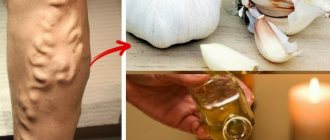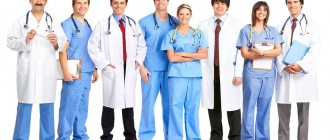- home
- Services and prices
- Phlebology
Varicose veins (VV) is a fairly common disease that affects both men and women. It can affect the lower limbs of a person, as well as deep veins, leading to the development of thrombosis and post-thrombophlebitis disease.
Spider veins that appear on a person’s legs as a result of the development of the disease become the reason that he begins to feel unattractive. In addition to external ones, there are also internal manifestations of explosives, which are expressed in the appearance of discomfort and pain in the calf muscles of the leg. The development of the disease increases the risk of other pathologies of the circulatory system.
The key to success in the fight against pathology lies in timely diagnosis and competent treatment. A big mistake on the part of a person is the independent use of various ointments and creams, which in most cases do not bring the desired effect. As a result, time was lost that could have been spent on proper and effective therapy.
In order to get rid of varicose veins, you need to solve the following problems:
- Elimination of symptoms.
- Removal of varicose veins.
- Prevention of the development and reappearance of explosives.
Only a highly qualified specialist with sufficient experience in the treatment and prevention of pathologies of this kind can successfully cope with each of the above tasks. These are the specialists who work at the Yuzhny Medical Center. The high level of qualifications of doctors in combination with the latest equipment will make it possible to make the correct diagnosis and carry out competent therapy, guaranteeing the absence of progression or recurrence of varicose veins of the lower extremities.
Symptoms of varicose veins
Symptoms of a disease are signs that clearly indicate its development. They are divided into:
- Subjective: Mild and aching pain in the calf muscles.
- A burning sensation and itching along the veins affected by varicose veins.
- Heaviness in the legs, increasing towards the end of the day.
- Skin hyperpigmentation.
- Increased fatigue of the lower extremities.
- Trophic venous ulcer of the leg.
- Pain in the calf muscles, aggravated by walking.
- The appearance of swelling in the lower legs and feet.
- Varicose veins of the saphenous veins, which are clearly visible even without the use of special equipment.
What veins look like
The very first warning sign of problems with the veins is swelling of the lower extremities at the end of the day. Swelling is especially pronounced if a person spends most of the day standing on his feet. It can disappear in the morning after a night spent resting.
However, if you do not pay due attention to this problem, the condition can worsen significantly. Intradermal veins in the legs with varicose veins become dark blue, protruding above the surface of the skin of the legs and feet. Outwardly, they look like bunches of red grapes that are overripe. Such external manifestations of pathology are accompanied by pain in the calves, a feeling of heat in the legs, swelling and cramps in the calf muscles. Over time, these symptoms are accompanied by a change in the appearance of the skin.
Detralex
The drug is sold in the form of tablets, suspension and gel for external use. You can buy Detralex without a prescription. This venotonic improves metabolic processes and stimulates microcirculation in tissues. The active ingredients of the drug are hesperidin with diosmin. This is a purified fraction of flavonoids that stimulates metabolic processes, tones and protects veins. Detralex is prescribed for varicose veins, enlarged veins in the legs, hemorrhoids, poor venous circulation and insufficient lymph flow. The drug has a small list of contraindications (among them are allergies to some components of the product and breastfeeding). Side effects include rash, irritability and indigestion.
Detralex
SERVIER (Servier), France
Diosmin, the active ingredient in Detralex, belongs to the group of venotonics and angioprotectors.
As a result of the action of the drug, the tone of the veins increases, which means they become less elastic and distensible, hemodynamics improve, and the phenomena of stasis decrease. Detralex prevents the adhesion of leukocytes to the endothelial wall, as a result of which the damaging effect of inflammatory mediators on the valve leaflets of the veins is reduced. from 200
5.0 2 reviews
4834
- Like
- Write a review
Causes of varicose veins of the lower extremities
VV of the lower extremities can develop under the influence of a number of factors and circumstances, the main ones being:
- Pregnancy. This is a key risk factor for the disease. This explains the fact that varicose veins occur several times more often in women than in men. In this case, the disease develops under the influence of an increase in the volume of circulating blood and compression of the retroperitoneal veins of the pregnant uterus.
- Obesity. The connection of this condition with the development of VV has been proven by a number of studies. At the same time, a direct connection was found between increased body weight and an increased risk of developing pathology.
- A lifestyle characterized by prolonged static loads with regular heavy lifting or prolonged immobility in a standing or sitting position.
- Dishormonal conditions. Their role in the development of the disease has increased significantly over recent years. This is due to the widespread use of hormonal contraceptives, the spread of hormone replacement treatment for osteoporosis and during the premenopausal period
- Heredity. The role of this factor in the development of varicose veins on the legs has not been unambiguously confirmed today.
- A disorder of the valvular apparatus of the veins, leading to a downward flow of blood under the influence of gravity every time a person stands up. The muscles that are located around the deep veins contract as you walk. These veins are subject to emptying, causing venous pressure to increase. Blood enters the superficial veins through communicating vessels with insufficient valves. As a result, they are filled with blood, which leads to their stretching and expansion (varicose veins).
Chime
"Curantil" is an angioprotector that normalizes blood circulation by improving blood flow. The active drug is dipyridamole, which prevents the formation of blood clots in varicose veins. "Curantil" is prescribed in the complex treatment of varicose veins and circulatory disorders, for vein thrombosis and their complications. "Curantil" has a whole list of contraindications, so these tablets for varicose veins are prescribed exclusively by a doctor strictly according to the indications.
Chime
Berlin-Chemie (Berlin-Chemie), Germany
The antiplatelet effect of Curantil is associated with its ability to reduce the reverse transport of adenosine into cells, which leads to its accumulation in the extracellular space.
The direct antiplatelet effect of Curantil lies in its ability to increase the antiplatelet ability of PGE1 and suppress the activity of phosphodiesterase in platelets, resulting in the accumulation of cyclic AMP, which has a direct vasodilatory effect on the arteries of the heart, and the accumulation of thromboxane A2 leads to an increase in the lifespan of platelets, due to their reduction aggregation. from 472
1.0 1 review
4507
- Like
- Write a review
Classification and stages
Like any disease, VV has several stages, differing from each other in the degree of spread of the pathology and symptoms. Among them, the following stages are distinguished:
- Initial (or compensation).
- Second (or subcompensation).
- Third (or decompensation).
A detailed description of each stage can be found here.
It is worth noting that complications can occur at any of the above stages, but their greatest likelihood is inherent in the last two. VV can serve as an impetus for the development of diseases such as:
- Thrombophlebitis.
- Erysipelas.
- Deep vein thrombosis.
- Trophic eczema.
A visit to a specialist, made at the first signs of the disease, will help reduce the risks of worsening the situation and begin removing varicose veins. You should not ignore even minor symptoms, because this can lead to undesirable and extremely negative consequences.
Diagnostics
Diagnosis of varicose veins, the symptoms of which are described above, poses the following tasks:
- Determining the presence of pathology in each individual patient. It often happens that people who do not have varicose veins are confident in their presence, and vice versa. However, only an experienced phlebologist, based on an external examination and a series of comprehensive studies, can make an accurate diagnosis.
- Establishing the type characteristic of venous pathology. The doctor determines exactly which veins have undergone pathological damage, and also establishes the extent of this damage and possible or already occurring consequences.
- Prescribing the correct course of treatment. Based on the diagnosis and the characteristics of each specific organism, the attending physician makes a choice in favor of one or another treatment or a set of therapeutic measures.
- Assessment of the level of effectiveness of therapy, which is carried out by the attending physician during the elimination of the disease or after the patient’s complete recovery.
The main methods for diagnosing VV include:
- Plethysmography.
- Thermography.
- Magnetic resonance imaging.
- Ultrasound angioscanning.
- Computed tomography.
- Clinical studies: conversation with the patient, his external examination and manual examination.
- Radionuclide phlebography.
- Intravascular ultrasound.
- X-ray phlebography.
Most often, it is enough for a professional specialist to conduct a clinical examination and ultrasound angiography in order to diagnose varicose veins in the legs. At the Yuzhny clinic, you can undergo a full examination in order to make an accurate diagnosis by an experienced phlebologist. Our specialists work closely with clients, clearly explaining to each of them the specifics of the disease and possible ways to combat it.
Treatment methods
Modern methods of treating varicose veins are aimed at reducing the degree of disability and trauma, which contributes to a faster recovery of the patient. Main therapeutic techniques include:
- Sclerotherapy. This method involves introducing a special medication into the lumen of varicose veins of the legs, causing a chemical burn of the internal venous wall. This leads to their gluing and cessation of pathological blood flow through them. Can be used alone or in combination with other types of manipulation. It is carried out without prior anesthesia with skin punctures using a thin needle. The duration depends on the scale of the lesion.
- Foam sclerotherapy, which involves the preparation by a specialist of a special medication of foam that can use an impressive area of the internal walls of the affected venous vessels. Used to treat large diameter veins.
- Endovenous laser coagulation, which is performed using a laser device on the main trunks of the leg veins and allows you to stop the pathological flow of blood through the affected veins due to the burn of their inner walls and their subsequent gluing. Laser treatment for varicose veins is available at the Yuzhny Medical Center.
- Miniphlebectomy, aimed at eliminating subcutaneous nodes and tributaries enlarged by varicose veins through punctures of the skin. It has excellent cosmetic effects and is used alone or in combination with other therapeutic methods under local anesthesia.
- Elimination of incompetent perforating veins, performed for the prevention of venous insufficiency and treatment of trophic disorders, including ulcers.
- Combined phlebectomy, which is a combination of some methods of treating veins, based on the indications and nature of venous pathologies.
Yuzhny Medical Center offers its clients modern approaches to the treatment of varicose veins. Qualified specialists work here, ready to conduct a competent examination in order to make a diagnosis and carry out effective treatment, more about which you can read here.
Troxerutin Zentiva
One capsule of this drug for varicose veins contains 300 mg of troxerutin. “Troxerutin Zentiva” is an analogue of “Troxevasin”: an angioprotector that relieves negative symptoms of varicose veins. The product reduces pain and inflammation in the legs, strengthens blood vessels, and relieves swelling. "Troxerutin" is taken three times a day, one capsule (with meals), with a sufficient amount of water. The course of treatment with Troxerutin lasts 4 weeks.
Troxerutin Zenitva
— chronic venous insufficiency; - trophic disorders in chronic venous insufficiency (dermatitis, trophic ulcers); - phlebeurysm; — superficial thrombophlebitis, periphlebitis; — postthrombotic syndrome; - post-traumatic edema, hematomas; - haemorrhoids; - diabetic angiopathy, retinopathy.
96
- Like
- Write a review
Complications with varicose veins
It is worth understanding that improper treatment of the disease or complete refusal of it can lead to complications. The latter appear not only in cosmetic defects of the lower extremities, but also in more serious forms. Among them:
- Trophic eczema, which subsequently develops into an ulcer.
- Thrombotic lesions of the venous system, including thrombophlebitis of the superficial veins and deep vein thrombosis of the lower extremities.
Venous blood is a kind of “sewer” for the body’s tissues and is saturated with substances and products of cell metabolism that are relatively harmful to the human body. Cells of the skin and subcutaneous tissue, as well as muscles and bones, discharge products of tissue respiration and other waste material into the venous system, which carries them to the heart, lungs, kidneys and liver. In case of disturbances in the functioning of the venous system, the content of these products in the tissues of the body increases.
A vein dilated by varicose veins leads not only to an increase in the concentration of harmful products in the tissues, but also to an increase in their swelling. This disruption of the outflow of harmful products, combined with swelling observed over a long period of time, leads to the death of skin cells and subcutaneous tissue and their subsequent replacement by venous eczema, represented by a dense and dotted structure of a dark color. The death of the surface layer of the skin is the cause of trophic ulcers.
What are venotonics
Venotonics or they are called phlebotonics, venoprotectors
are medicines that can tone the veins, improve the quality of the walls of blood vessels, properly distribute lymph and establish lymph flow and blood flow, “adjust the quality of details” of our body in order to prevent or get rid of the development of dangerous consequences - blood clots and thrombosis . Venotonics are presented very widely on pharmacy shelves and each of the drugs has a varying degree of effectiveness, but one common pharmacological effect is increased muscle tone on the walls of blood vessels and an effect on capillary permeability. Taking venotonic drugs is a key point in the successful treatment of varicose veins. While taking the drugs, there is a decrease in unpleasant symptoms in the lower extremities, pain, swelling, and heaviness.
Prevention
Varicose veins on the legs, which are treated today using various methods, can be avoided by following preventive measures. Due to the fact that the risk of developing VV is much higher in women, it is they who need to not ignore the prevention of this disease. However, men should also not ignore preventive measures aimed at preventing the development of varicose veins in the legs. Key activities include:
- The use of local preparations (gels, ointments, creams) that help strengthen the walls of blood vessels, optimize the functioning of valves, reduce the risk of blood clots, eliminate swelling and heal wounds.
- The use of knee socks, tights, stockings and elastic bandages that have a compression effect. This is an excellent tool in the fight against varicose veins. These products can be purchased in specialized stores after consultation with a doctor, which is necessary due to the relative difficulty in independently determining the required type of compression garments.
- Specific exercises performed on a daily basis. They are able to stop even the dilation of blood vessels that has already begun. It should be borne in mind that if you have a tendency to BB, you will have to give up heavy physical activity, but in no case should you ignore an active lifestyle. For example, light jogging, swimming, yoga and skiing help maintain healthy leg veins.
- Preventive tablets for varicose veins are recognized as a more effective method of preventing VVs than the use of local drugs. However, any oral medication should be used only as directed and under the strict supervision of a competent specialist.
In order to prevent the situation from worsening, you should stop self-medicating at the first manifestations of the disease and consult a doctor. This will make it possible to make a correct diagnosis in a timely manner and prescribe adequate treatment, which will stop the progression of the disease and reduce to zero the risks of developing other pathologies.
Venarus
The active ingredients of these tablets for varicose veins are diosmin with hesperidin. Venotonic angioprotector can be purchased without a prescription. "Venarus" improves the tone of the vein walls, improves blood circulation and stimulates the functioning of venous valves. "Venarus" is prescribed for hemorrhoids, varicose veins of the lower extremities and pelvis, as well as for insufficiency of venous valves and trophic ulcers on the legs. The drug has very few contraindications and side effects; it is used both for complex and course treatment of varicose veins.
Venarus
Obolenskoye (OBL Pharm), Russia
Venarus has an angioprotective and venotonic effect.
Reduces the distensibility of veins, increases their tone and reduces venous congestion. Reduces permeability and fragility of capillaries and increases their resistance. Improves microcirculation and lymphatic drainage. When used systematically, it reduces the severity of clinical manifestations of chronic venous insufficiency of the lower extremities of an organic and functional nature. from 300
5.0 23 reviews
2955
- Like
- Write a review
FAQ
Very often people are interested not only in the question of how to treat varicose veins. Many patients suffering from this disease are interested in what they can do and what they cannot do, in order not to worsen their health condition and not provoke the emergence of other health problems. Below are frequently asked questions of interest to people with VV.
Is it possible to get vaccinated against coronavirus if you have varicose veins?
The answer to the question of whether coronavirus vaccination is allowed for varicose veins is yes. This pathology is not a limitation for vaccination against COVID-19 in the absence of its exacerbation. If a person does not suffer from acute thrombophlebitis, then this refers to decompensation of varicose veins of the legs, and he is not prohibited from being vaccinated against coronavirus infection.
Is it possible to drink coffee if you have varicose veins?
Caffeine has the ability to increase blood pressure and increase heart rate, which are unfavorable factors for fragile, swollen veins damaged by varicose veins. Coffee has the following effects on blood vessels:
- Increased load on the vein walls.
- Increased blood pressure.
- Short-term venous expansion.
Therefore, with varicose veins, you can drink coffee, but not exceeding the daily norm. Completely giving up your favorite tonic drink will not lead to the restoration of veins affected by pathology, so you should not torture yourself and not drink coffee. You just shouldn't drink more than 1-2 cups a day. It is also recommended to dilute coffee with milk.
Is massage allowed?
Comprehensive treatment of varicose veins at an early stage includes massage. However, it requires proper execution.
For varicose veins, you can only do a light massage of the lower extremities. It is also indicated for patients with uncomplicated forms of varicose veins.
It is advisable to perform a professional manual massage for patients with varicose veins, but it is imperative to take into account all the features of the course of the disease. It is recommended that you consult with a specialist before you begin massaging the area where the veins are affected by varicose veins.
Is it possible to warm your feet?
When the legs are heated, the veins expand, blood circulation increases and the load on the venous walls only increases. This can worsen the already poor condition of varicose veins. This is why it is recommended to limit hot baths for patients with varicose veins. It will be better to reduce the temperature of the water from hot to warm, which will not cause vasodilation and will not lead to a worsening of the person’s condition. You should always remember that consultation with a specialist is necessary regardless of whether we are talking about hot baths or vaccination for varicose veins.
Are running and squatting allowed?
Experts recommend starting jogging at the first signs of developing VV. It is important to ensure that these activities are systematic. During running, the blood is saturated with oxygen. Therefore, it is better to give preference to jogging in the forest or park, where the air is always clean.
However, you should adequately assess your capabilities and endurance, and avoid excessive stress, which is contraindicated for varicose veins. It is important to monitor a gradual increase in loads that do not exceed values that are comfortable for the body.
A person with BB should not feel tired while jogging. Only short-distance running using compression socks is allowed. In case of thrombophlebitis, jogging should be avoided. The admissibility of running and squats with pelvic varicose veins should be discussed with your doctor.
What is the best treatment for varicose veins?
Today there is no clear answer to the question of which therapeutic method is the most effective for varicose veins. The fact is that success in treatment depends on a number of factors that must be assessed by a qualified specialist in each specific case. Only after this can they make a final decision on prescribing one or another treatment for IV.
In order to prevent the situation from worsening, you should stop self-medicating at the first manifestations of the disease and consult a doctor. This will make it possible to make a correct diagnosis in a timely manner and prescribe adequate treatment, which will stop the progression of the disease and reduce to zero the risks of developing other pathologies.











